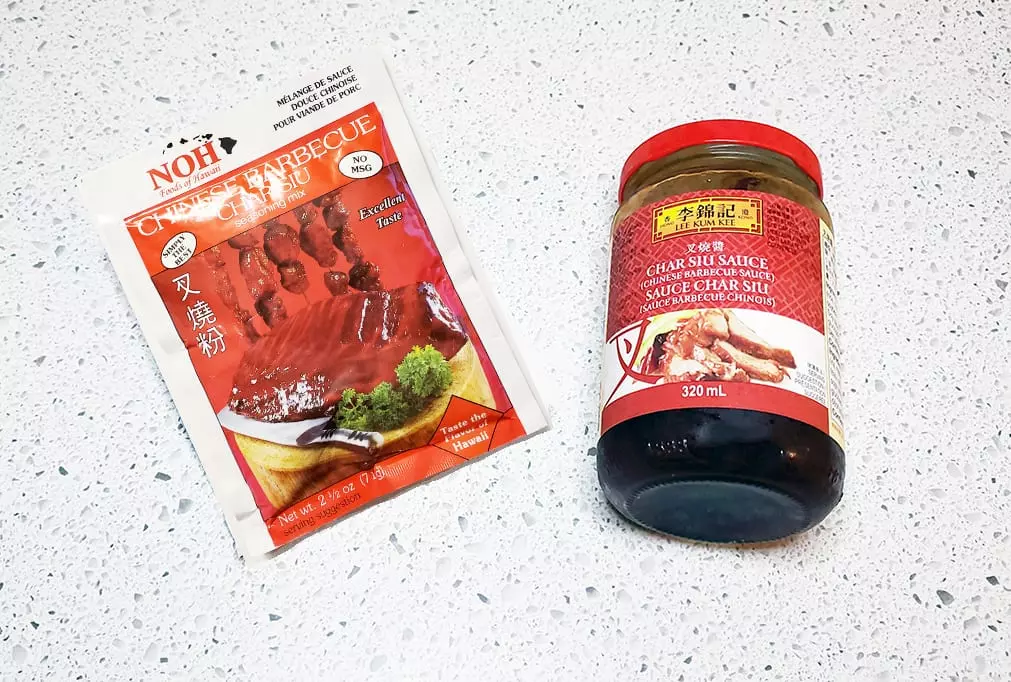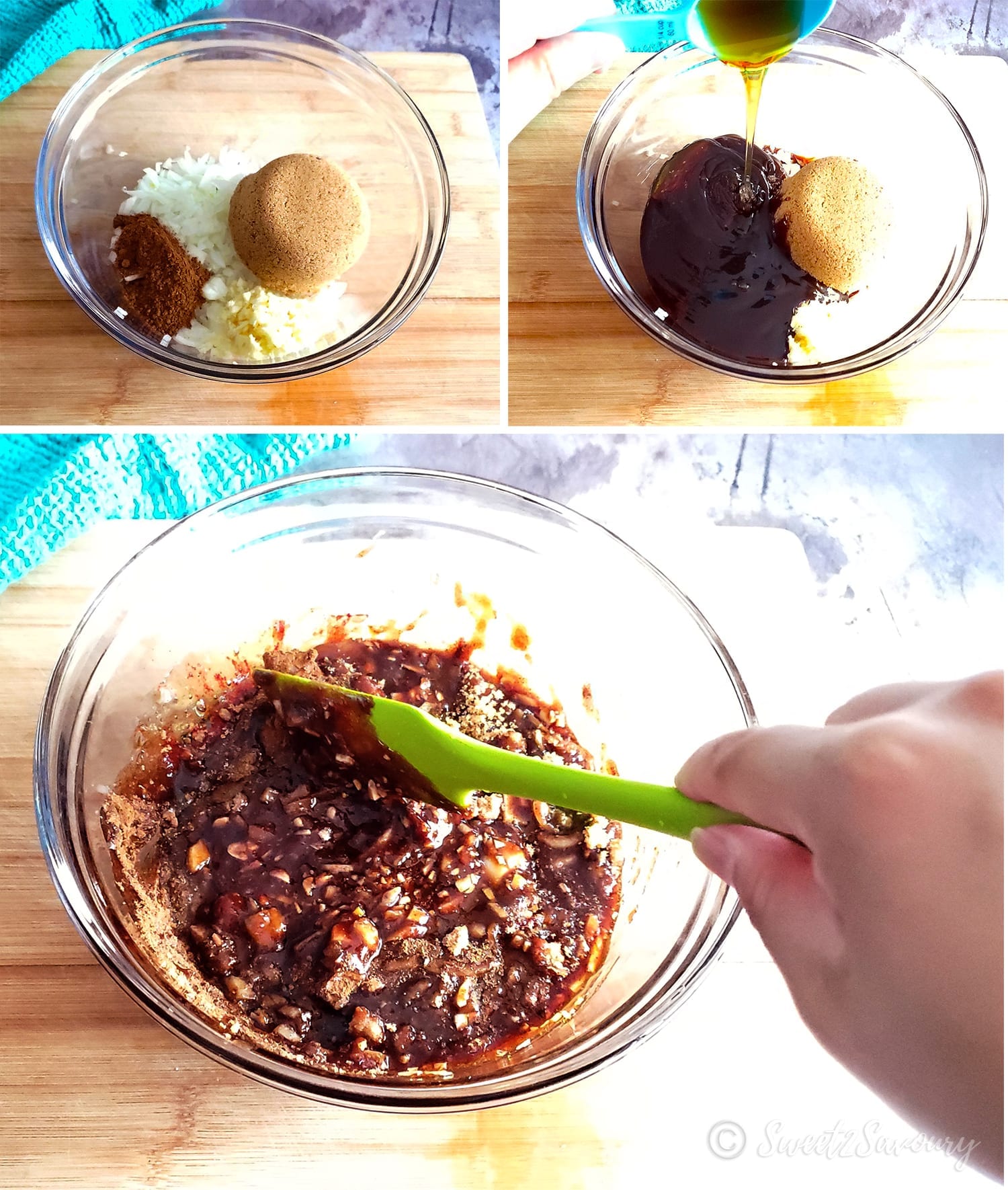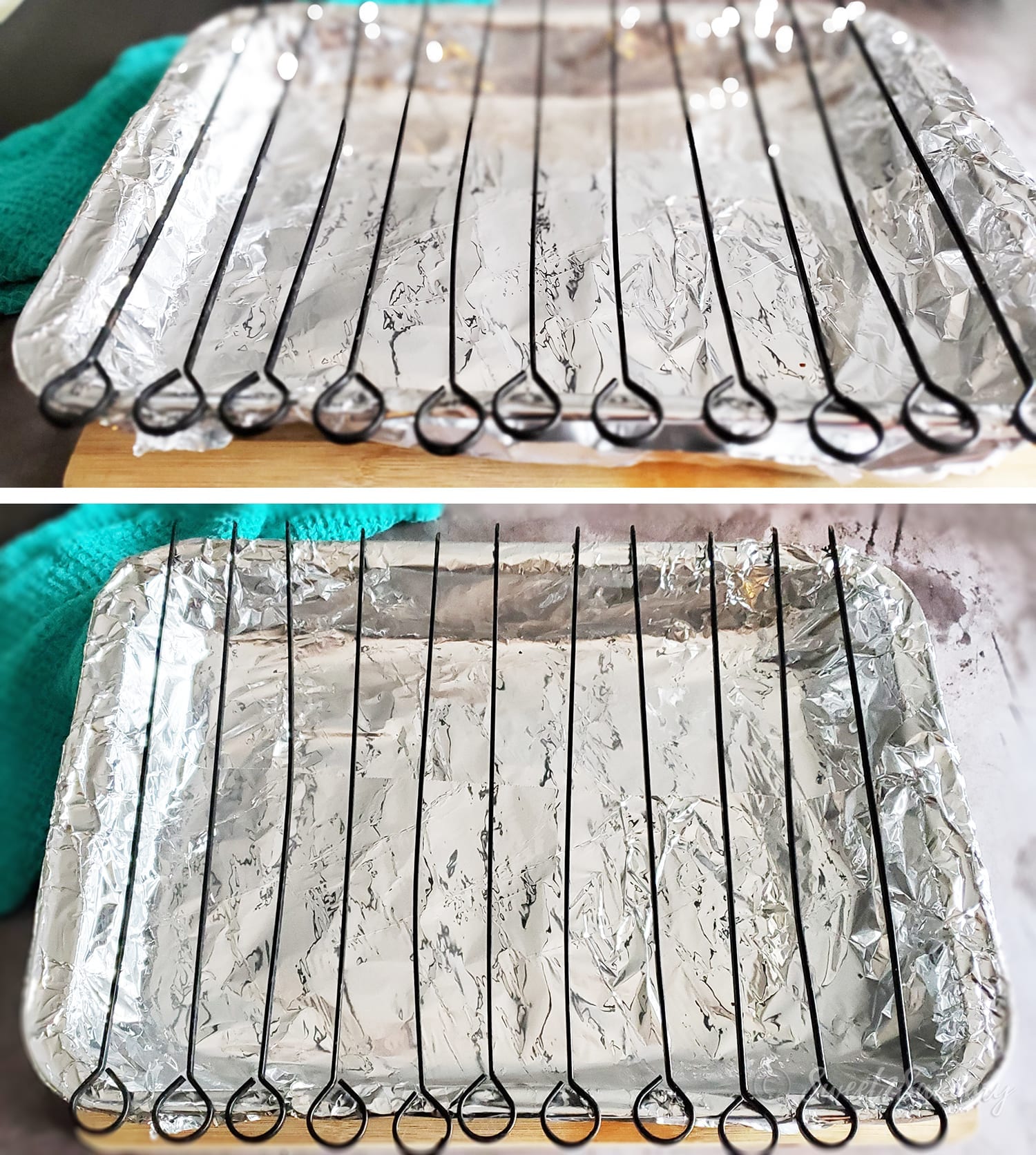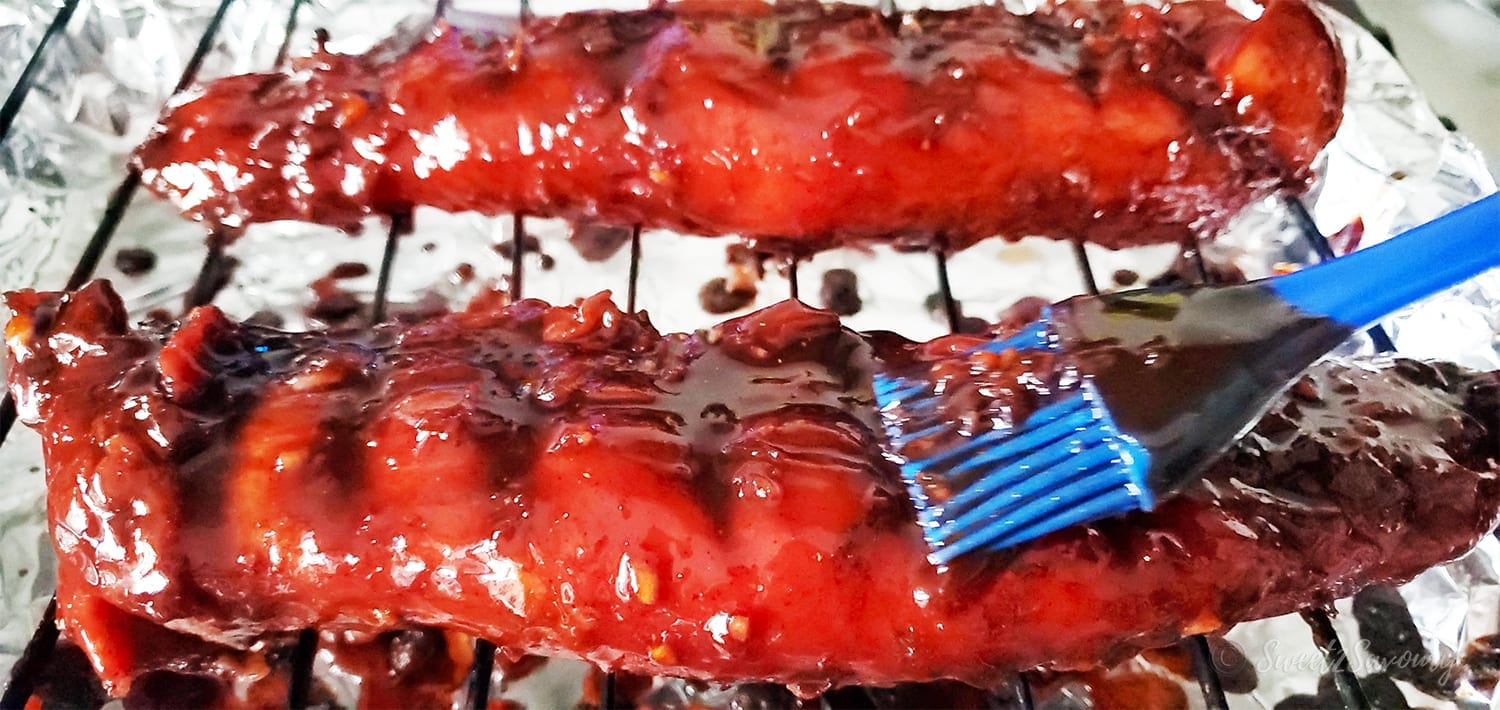Deliciously sweet and sticky bbq pork made with homemade char siu sauce. This versatile pork dish pairs well with rice, noodles, soups or even bread. Your biggest challenge? Letting it marinate for at least 4 hours (or longer) to bring out even more aromatic flavours once roasted. If you are in a pinch for time, try my 3-ingredient char siu pork recipe here.
*Good To Know*
- Store bought seasoning mix, marinade in a jar or homemade char siu sauce? Of course, homemade marinade is always best. However, if you’re in a hurry and don’t have time (or ingredients) to put together a homemade version, a seasoning mix or pre-made marinade from a jar works well too. Either choice will taste flavourful. The difference between the mix and the pre-made marinade is that the powdered version gives you better control of how diluted you want the marinade to be. Use as a dry rub, add a little or a lot of water to the mix to control the desired flavour outcome. The jarred marinade is pre-mixed and comes in a thick texture that you simply mix with the pork. [the_ad id=”27047″]
- What type of Pork should I use? Pork tenderloin, pork shoulder (aka. pork butt) or pork belly are good cuts of meat for this recipe. You can adapt your choice of meat based on preference for lean or fattier flavour.
- What is rice cooking wine used for? Used widely in asian dishes, this rice wine is a popular cooking liquid (made from fermented glutinous rice) that enhances or intensifies flavour and aroma in food. It’s a form of salted alcohol and can be used much like other wines such as red and white wine in other cuisines. If you don’t have rice wine available, Mirin is a good substitute for rice wine (keep in mind that mirin is sweeter than rice wine though).
- How should I grill char siu pork on the barbecue? Grill char siu pork with indirect heat for the first 20 – 30 minutes (or longer) depending on the size and cut of your meat. Check internal temperature and continue to grill if necessary. Meat reaches doneness at 155°F (68°C). Grill tenderloins or meat over direct heat for the last 3 to 5 minutes to produce a little char for more flavour.
You know what I love most about bbq pork? The fact that it’s super easy to make! Simply mix all the ingredients together, let it marinade, then roast in the oven (or on your barbecue). Voila! Within a few hours, you’ll have delicious homemade bbq pork that is just as good as (if not better than) store bought. My favourite way to eat this is with plain jasmine rice and a side of vegetables. I have even made tasty BBQ Pork Buns (recipe here) with char siu and used it as delicious added protein in my Wonton Noodle Soup recipe. BBQ Pork is simple but all-around delicious!
How to roast Char Siu (Bbq) Pork
Pork tenderloin is a lean cut and a traditional choice of meat for char siu. This does not mean it will end up tasting dry. It all comes down to proper roast time and oven temperature. As long as you follow my recipe, you will end up with flavourful and juicy bbq pork. If you prefer a fattier cut, choose a pork shoulder (aka. pork butt) or pork belly. Internal temperature for pork should reach 155°F (68°C) for doneness.You might be wondering, why is char siu red? The obvious answer is that the colour can stem from ingredients such as red fermented bean curd, annatto seeds, chilli or other red spices. Food colour is used simply for convenience (and sometimes in place of the aforementioned spices). In most asian cultures, red is a prosperous or auspicious colour that represents luck, good fortune, happiness, beauty and vitality.
In my opinion, it makes sense why red food colour is used to enhance the appearance of cooked meat. It’s appetizing to look at, brings joy to eat and to be honest, it’s not too different than seeing brown coloured grilled meats. If you’re not fond of the red food colour, you can skip it altogether and follow my recipe without it.
Char Siu (Xá Xíu) BBQ Pork
Ingredients
- 2½ pounds pork tenderloin (2 loins), silver skin removed (if needed)
- 1 cup onion (1 large), diced
- 1½ tablespoons garlic (5 cloves), minced
- ¾ cup brown sugar, packed
- 1½ tablespoons ground five spice
- ⅓ cup soy sauce
- ¼ cup oyster sauce
- ½ cup hoisin sauce
- ¼ cup honey
- 1 teaspoon red liquid food colour
- ⅛ cup rice cooking wine
INSTRUCTIONS
- Remove silver skin on pork tenderloin (if present). Rinse and pat dry with paper towels. Set tenderloins aside in a large mixing bowl.
- In a separate large bowl, mix together the rest of the ingredients until well combined. Pour marinade over pork tenderloins. With food safe gloves on, rub marinade evenly over meat. Cover with plastic wrap or place meat into a large plastic zipper bag and refrigerate for 4 to 6 hours (overnight is best).
- Preheat oven to 350°F (176.7°C). Use a roasting pan with rack and place tenderloins on rack (2 inches apart). Roast meat on middle oven shelf for 20 minutes.
- While tenderloins are roasting, pour excess marinade into a medium sauce pan and bring to a boil on high heat. Stir continuously as it boils. Cook for 15 to 20 minutes on high heat stirring continuously until marinade is reduced by half or is thickened. Set aside.
- Brush cooked marinade on tenderloins, turn meat over then brush more marinade on and roast for another 20 minutes. Meat is done when internal temperature reads 155°F (68°C). If it reads less, roast for another 5 to 10 minutes and check internal temperature again.
- Set broiler on high. Broil tenderloins for 3 to 5 minutes or until a little char occurs. Remove from oven and place tenderloins on a tray or plate. Let rest for 10 minutes before slicing. Enjoy with rice, noodles or bread and use extra cooked marinade for dipping. Enjoy!











